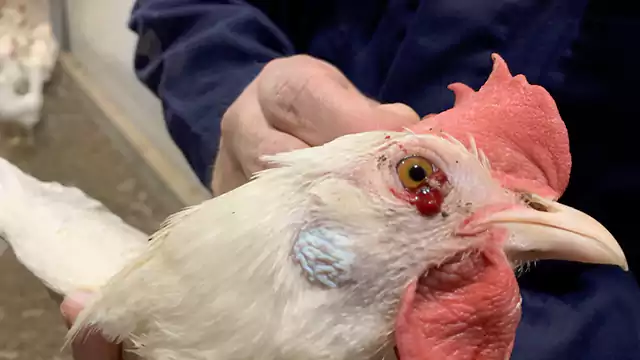Queen Farm / Newcastle
Poultry Student Zainul Abidin Paracha Department of Poultry Science Agricultural University Faisalabad Sub Campus Toba Tek Singh
Rani Kheet or Newcastle Disease is the deadliest disease found in almost all countries of the world including Pakistan. The disease is caused by the N.D. virus. Which is RNA virus.
The disease was first reported in 1924 at Rani Kheet in the Indian subcontinent, so Newcastle is commonly referred to as Rani Kheit. While the disease was discovered in the Newcastle area in Britain in 1926, then in 1944 the disease was also seen in the United States and thus it spread throughout the region.
These viruses affect the respiratory and brain systems of birds, causing them to have difficulty breathing. All functions and body parts of chickens are out of sync. As a result of this disease, millions of chickens and The chicks die. The mortality rate due to this disease can be up to 90-10%. The reasons for the spread of the virus are: Rani Kheet virus contaminated water liters, infected food, stray birds,
farm equipment staff, non-compliance with hygiene rules, Failure to separate sick and healthy birds on the farm also spreads the disease to healthy birds. The queen beetle virus can survive for 288 days in an egg shell, 255 days in an egg and 254 days in a farm with a temperature of up to 20 degrees Celsius.
Water can survive in food and litter. At 60 degrees Celsius it dies in 15 minutes. The use of chemical disinfectants for protection can kill the virus and prevent the spread of the disease. These include formalin, a solution of caustic soda, hypochloride, idophores and coal tarderitos. In the signs of
This type of virus attacks three systems: the respiratory system, the nervous system, the digestive system, the respiratory system. In some chickens,
there is a complete blockage of the voice. In the nervous system, chickens begin to have seizures. There are red spots of blood. The intestines become swollen and blood stains appear on their inner membrane. The throat shows signs of inflammation and a thick sticky substance accumulates in it.
Diagnosis and treatment of the disease is based on information obtained from Falcons, Symptoms, Pre-Death Examination and Post-mortem. Diagnosis of the disease is possible. Tiny blood spots on the inner surface of the skin are the main symptoms of this disease and inflammation of the intestines.
Rani Kheet is a viral disease so it is better than precautionary treatment, only better biosecurity and timely vaccination can prevent this disease. However, in case of disease, enrofloxacin, amantadine, phyto-biotics and immunomodulators are very helpful. In addition, the use of multivitamin and amino booster is also effective.
In the eyes of 10-8 day old chicks, mix 5 cc of water (distilled water) in an inoculated ampoule (100 doses) and put one drop in a bird’s eye from a dropper.
For one month old chicks, mix 50 cc of distilled water in an ampoule (100 doses) and inject each chick with half a cc of this syringe in the subcutaneous arm or in the breast meat.
At the age of four months, bring 100 cc distilled water in an ampoule (100 doses) and vaccinate each bird with one cc in the arm.

